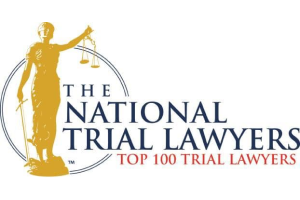What the federal indictment of Chauncey Billups alleges — and what penalties the defendants could face under federal law and the Sentencing Guidelines
On October 23, 2025, a federal grand jury in the Eastern District of New York unsealed a multi-defendant indictment charging 31 people — including NBA head coach Chauncey Billups — in a sprawling scheme to rig high-stakes poker games and launder the proceeds, and in a related set of allegations tied to illegal sports-betting activity. The indictment says the scheme involved members and associates of multiple La Cosa Nostra families and used former NBA players as “face cards” to attract wealthy gamblers to the rigged games.
The core allegations (short version)
Prosecutors say the defendants ran illegal, high-stakes poker games in New York City, the Hamptons and elsewhere that were rigged using sophisticated cheating technologies (altered shufflers, card-reading equipment, special lenses and covert signaling), and that the operation defrauded players out of millions of dollars. The government has described at least $7 million in losses tied to the poker scheme in court filings and news coverage. The indictment also alleges related money-laundering activity and, in parallel matters, alleged efforts to exploit inside information about NBA players for betting purposes.
What federal crimes the indictment charges
According to the Justice Department and the unsealed indictment, the defendants are charged in counts that include — most prominently — a conspiracy to commit wire fraud and a conspiracy to commit money laundering. The indictment runs multiple counts (the press release lists seven counts across the various defendants and schemes). Wire-fraud charges and conspiracy charges like these are the common federal means to prosecute schemes that use interstate communications and financial networks to defraud people.
To be specific about the statutes commonly charged in these kinds of cases:
* Wire fraud (18 U.S.C. § 1343) — criminalizes using interstate wire communications (phones, text, internet, etc.) in furtherance of a scheme to defraud.
* Attempt/Conspiracy to commit fraud (18 U.S.C. § 1349) — makes attempts and conspiracies to commit wire/mail fraud prosecutable with the same penalties as the completed offense.
* Money-laundering and money-laundering conspiracy (18 U.S.C. § 1956 and § 1956(h)) — criminalize financial transactions intended to conceal or promote the proceeds of specified unlawful activity and criminalize conspiracies to do so.
The statutes charged carry significant statutory maximums. For example, the wire-fraud statute — and conspiracies to commit it — carries a maximum prison term of up to 20 years on each count in many cases; many public reports note that each of the principal counts in these indictments carries a statutory maximum of 20 years, meaning a defendant convicted on both a wire-fraud conspiracy count and a money-laundering conspiracy count could face back-to-back maximums in theory (although actual sentences are governed by the Sentencing Guidelines and the court’s discretion).
Money-laundering statutes also carry steep maximum penalties and include both substantive transaction-based offenses and conspiracy provisions; the government’s public materials describe money-laundering conspiracy counts in this matter.
How the United States Sentencing Guidelines factor in (the practical picture)
If a defendant is convicted in federal court, the judge will use the U.S. Sentencing Guidelines to calculate an advisory sentencing range (the Guidelines are advisory, not mandatory, but they heavily influence federal sentences). Two Guidelines sections most relevant here are:
* §2B1.1 (Theft, Fraud, and Similar Offenses) — this is typically the guideline used for fraud offenses (including wire fraud). It starts from a base offense level (recent amendments generally treat offenses carrying a 20-year statutory maximum as having a higher base level), and then increases the offense level based primarily on loss (the amount of money the scheme actually took or intended to take), plus enhancements for things like sophisticated means, number of victims, use of interstate or foreign financial systems, and obstruction. (Loss is often the single biggest driver of guideline increases in fraud cases.)
* §2S1.1 (Money-Laundering Guideline) — this guideline generally ties the money-laundering offense level to the offense level for the underlying criminal activity that produced the funds (for example, the fraud guideline’s offense level), or it provides a separate calculation that begins at a base level and adds increases keyed to the value of laundered funds and to special features (e.g., knowing the funds were proceeds of certain crimes, sophisticated laundering). §2S1.1 also contains enhancements (e.g., for sophisticated laundering, involvement of financial institutions, etc.).
Practical upshot: loss, sophisticated conduct, role in the offense, obstruction, and criminal history are the principal drivers of the Guidelines range. In a large rigged-poker scheme that allegedly netted millions (public reporting cites roughly $7 million or more in reported losses tied to the poker fraud), the loss-based enhancements under §2B1.1 could add many offense levels to the base, producing an advisory range that commonly moves from a guideline of months to several years in custody — though the precise number depends on how loss, relevant conduct, and enhancements are calculated and whether a defendant accepts responsibility or cooperates.
Typical enhancements that could increase Guideline ranges in this kind of case
* Loss amount: the larger the loss (actual or intended), the greater the increase under §2B1.1.
* Sophisticated means: use of specialized technology or complex concealment techniques (the indictment alleges altered shufflers, electronics, covert signaling) can trigger a “sophisticated means” enhancement.
* Role adjustment: leaders/organizers receive aggravating role enhancements; minor participants can get reductions.
* Money laundering enhancements: §2S1.1 may increase the offense level if the defendant knew funds were proceeds of specified unlawful activity, or if the laundering was sophisticated.
* Acceptance or cooperation: timely acceptance of responsibility typically reduces offense level; substantial assistance to prosecutors can lead to downward departures or Rule 35 motions.
A concrete (but cautious) way to read the numbers
* Statutory exposure: reports and the statutes themselves show up to 20 years on typical wire-fraud or money-laundering counts; multiple counts can create very large theoretical maximums. But statutory maximums are not the same as the expected Guidelines sentence.
* Guidelines reality: the Guidelines turn heavily on loss and the other factors above. Large commercial frauds involving multi-million-dollar losses often produce guidelines calling for multi-year terms; however, the final sentence can be lower (or higher) depending on plea agreements, cooperation, mitigating factors, the defendant’s criminal history, and the judge’s consideration of the §3553(a) factors. For example, an offense that starts with a modest base level can jump dozens of levels once a multi-million-dollar loss and a sophisticated-means enhancement are counted.
What actually happens next (procedural steps)
Those arrested will make initial court appearances where bond and conditions are addressed; the government will produce discovery and the case may be resolved by plea agreements, cooperation agreements, or trial. Sentences in complex fraud/money-laundering matters often turn on negotiated dispositions (cooperation can dramatically reduce exposure), on how loss is calculated, and on whether defendants accept responsibility. The Justice Department press release identifies the counts and the USAO handling the prosecution; the indictment is the authoritative source for the specific allegations against each named person.
Final notes and legal caveats
* An indictment is only an allegation — defendants are presumed innocent until proven guilty at trial or until they plead guilty.
* Sentences are highly fact-dependent; the Guidelines give only an advisory range and the court has discretion under 18 U.S.C. § 3553(a). Cooperation, acceptance of responsibility, the defendant’s role, prior record, and the exact loss and relevant conduct calculations make a huge difference in the outcome.
Here’s a detailed breakdown of what is publicly available in the indictment against the poker-rigging scheme involving Chauncey Billups and his co-defendants, followed by an illustrative Sentencing Guidelines calculation for a hypothetical $7 million loss scenario. Note: This is not legal advice — it’s a factual summary plus an educational walk-through of how the federal Sentencing Guidelines might apply.
Summary of indictment and defendants
The indictment
- On October 23, 2025 the United States Attorney’s Office, Eastern District of New York (USAO EDNY) announced a seven-count indictment charging 31 defendants for schemes to rig illegal high-stakes poker games.
- The docket is styled U.S. v. Aiello et al., Docket No. 25-CR-314 (JMA) in the EDNY.
- The scheme alleged to have begun “as early as 2019” and to have involved illegal poker games (commonly Texas Hold’em) in New York City, East Hampton and other U.S. locations.
- The indictment alleges at least $7 million in losses from the rigged games.
- The illegal scheme allegedly used sophisticated cheating technology (altered shufflers, x-ray tables, marked cards, special lenses/sunglasses) and involved members/associates of the Bonanno crime family, Gambino crime family and Genovese crime family.
- The “bait” for wealthy gamblers (“fish,” “whales”) was the opportunity to play high-stakes with known former professional athletes (“face cards”) – Billups among them. The victims apparently believed they were playing in large, but honest, illegal poker games; instead the games were rigged.
- The indictment also alleges extortion, robbery and collection threats when some victims refused to pay or challenged the rigged games.
Sample of named defendants
From the press release:
Here are a selection of defendants (of the 31), with role descriptions when available:
- Ernest Aiello (Wantagh, NY) — member of the Bonanno family.
- Nelson Alvarez (aka “Spanish G”, Uniondale) — cheating team participant.
- Louis Apicella (“Lou Ap”, New Rochelle) — associate of Gambino, cheating team.
- Ammar Awawdeh (aka “Flapper Poker” or “Flappy”, Brooklyn) — organizer of rigged games.
- Saul Becher (Bronx) — organizer.
- Chauncey Billups (age 49, Lake Oswego, OR) — former NBA player/coach, alleged “face card” and part of cheating teams.
- Matthew Daddino (“The Wrestler”, Franklin Square, NY) — Genovese associate, recipient of proceeds.
- Eric Earnest (aka “Spook”, St. Louis) — cheating team.
- Lee Fama (Brooklyn) — Gambino family member, receipt of proceeds.
- John Gallo (Brooklyn) — organizer.
- Marco Garzon (Elizabeth, NJ) — cheating team.
- Thomas Gelardo (“Juice”, Scarsdale) — Bonanno associate, extortion acts.
- Jamie Gilet (Jericho, NY) — cheating team.
- Tony Goodson (“Black Tony”, Forsyth, GA) — supplied cheating technology.
- Kenny Han (Queens) — cheating team.
- Shane Hennen (“Sugar”, Las Vegas) — supplied technology and organized games.
- Osman Hoti (“Albanian Bruce”/“Big Bruce”, Ridgefield Park,
Mathew Galluzzo is a federal criminal defense attorney in New York City and a former Manhattan prosecutor. He has successfully defended numerous individuals charged with federal wire fraud crimes and RICO. If you or a loved one have been indicted in connection with this NBA gambling scandal, you should strongly consider contacting him about his legal services.







